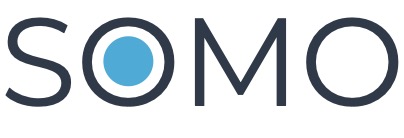Citizen Generated Data (CGD)
1. Overview of Technological Tools for Data Collection
a. Mobile Data Collection Apps:
- Overview: Mobile data collection apps allow field workers to collect data using smartphones or tablets. They replace traditional paper-based methods, streamlining data collection and minimizing errors.
- Examples:
- KoboToolbox: Open-source platform for field data collection, popular in humanitarian settings.
- ODK (Open Data Kit): Flexible platform that enables the creation of customized mobile forms for data gathering.
- CommCare: Mobile data collection app widely used for health-related surveys and monitoring.
- Key Features:
- Offline data collection (useful in remote areas).
- Real-time data sync once connected to the internet.
- Incorporation of multimedia (photos, videos, GPS).
b. Social Media Analysis Tools:
- Overview: These tools analyze data from social media platforms to understand trends, sentiment, and behaviors. Useful for real-time feedback and understanding public opinion.
- Examples:
- Hootsuite: A tool to monitor and analyze social media trends and interactions.
- Brandwatch: Offers deep social media analytics and insight extraction.
- NodeXL: An Excel plug-in for analyzing network patterns from social media data.
- Key Features:
- Sentiment analysis to understand public mood.
- Identification of influencers and key discussion topics.
- Data visualization tools to map networks or trends.
c. Online Survey Platforms:
- Overview: Online survey platforms are used to create, distribute, and analyze surveys for large-scale data collection. These platforms are highly customizable and allow for efficient data collection across broad populations.
- Examples:
- SurveyMonkey: A simple-to-use platform for designing and analyzing surveys.
- Google Forms: Free tool for building surveys, ideal for small-scale projects.
- SABASI: An advanced platform offering robust survey design and detailed analytics.
- Key Features:
- Customizable survey design (multiple choice, open-ended questions, etc.).
- Built-in analytics to generate reports and visualizations.
- Ability to reach large audiences via email, social media, or web links.
d. Geographic Information System (GIS) Tools:
- Overview: GIS tools capture, store, and analyze spatial data, offering a geographic context to data collection. They are especially valuable for projects focused on community development, urban planning, and disaster response.
- Examples:
- ArcGIS: Industry-standard GIS tool for detailed spatial analysis and mapping.
- QGIS: Open-source alternative for geospatial analysis.
- Google Earth: User-friendly tool for visualizing geographic data.
- Key Features:
- Collection of location-based data via GPS.
- Creation of interactive maps for visualization.
- Spatial analysis to identify patterns, such as resource distribution or accessibility.
2. Advantages and Challenges of Using Technology in Data Collection
a. Advantages:
- Efficiency:
- Technology speeds up the data collection process. For instance, mobile apps allow for instant data entry and real-time syncing, reducing the need for manual transcription and data entry.
- Accuracy:
- Automated tools reduce human error and allow for more precise data collection (e.g., automatic time-stamping, GPS coordinates). Online forms often include validation rules to minimize mistakes.
- Cost-Effectiveness:
- Especially for large-scale surveys, online tools reduce costs related to paper, travel, and data transcription. Mobile apps also allow for quicker data collection and analysis.
- Real-Time Data:
- Technology tools provide immediate access to data, which is useful in rapidly changing situations (e.g., disaster response, political polling).
- Wider Reach:
- Online survey platforms and social media analysis tools enable researchers to gather data from a diverse and broad audience, including hard-to-reach populations.
b. Challenges:
- Accessibility:
- Not all populations have equal access to technology. For example, rural or underserved communities may lack internet access or smartphones, limiting the reach of digital surveys.
- Digital Literacy: Some participants may struggle with using mobile apps or online tools, creating barriers to participation.
- Privacy Concerns:
- Collecting data through technology poses privacy risks. Sensitive data (e.g., health, location) could be vulnerable to breaches. Informed consent must be obtained and data security practices followed.
- Regulations like GDPR (General Data Protection Regulation) place stringent requirements on how data must be collected, stored, and used, particularly in cross-border projects.
- Data Quality:
- Automated tools may not always capture the nuances of human interaction, particularly in qualitative data. Social media data, for example, may not represent a fully accurate or unbiased view of a population.
- Over-reliance on technology could also lead to superficial insights without deeper contextual understanding.
3. Case Studies of CGD Projects that Effectively Used Technology for Data Collection
Case Study 1: Mobile Data Collection in Disaster Relief (Nepal Earthquake 2015)
- Overview: Following the devastating earthquake, NGOs and the government used mobile data collection tools like KoboToolbox to assess damage, track aid distribution, and monitor recovery efforts.
- How Technology Helped:
- Field workers collected geotagged data on building damage and needs of displaced populations.
- Real-time data enabled rapid decision-making on resource allocation and disaster relief.
- Challenges Faced:
- Some areas lacked network coverage, delaying data transmission.
- The need to train field staff on using mobile tools slowed initial response times.
Case Study 2: Social Media Sentiment Analysis for COVID-19 in Nigeria
- Overview: During the COVID-19 pandemic, social media analysis tools were used to track public sentiment on lockdown measures, vaccination campaigns, and public health guidelines.
- How Technology Helped:
- Researchers monitored Twitter and Facebook to gauge real-time sentiment on pandemic responses.
- Insights from the analysis helped shape public health communication strategies.
- Challenges Faced:
- Social media data skewed towards younger, urban populations, leaving out rural perspectives.
- Identifying and filtering misinformation was a significant challenge.
Case Study 3: GIS for Water Access Mapping in Kenya
- Overview: GIS tools were used in community-driven development (CGD) projects to map access to clean water in rural Kenya. Using GPS-enabled mobile devices, local communities participated in mapping the locations of wells, water points, and irrigation systems.
- How Technology Helped:
- GIS maps provided a visual representation of water access, revealing areas where communities lacked adequate resources.
- This data guided the placement of new water facilities.
- Challenges Faced:
- The cost of GIS software and equipment was initially prohibitive for small organizations.
- Continuous training was required to maintain and update data effectively.
Last modified: Friday, 20 September 2024, 5:56 AM


